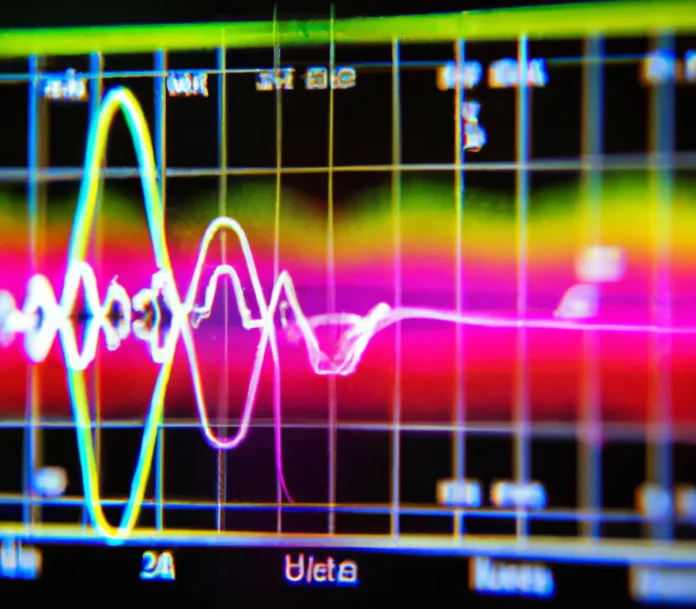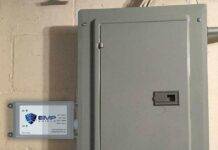
Introduction
Picture this: You’re going about your day, enjoying the latest smartphone apps and streaming your favorite show on your ultra-high-definition smart TV, when suddenly – everything goes dark. Imagine your electronic devices rendered useless, leaving you disconnected from the world in a flash. It’s not a scene from a dystopian movie; it’s the potential outcome of a powerful electromagnetic pulse (EMP) on our modern society.
In this article, we’ll unravel the effects of electromagnetic pulse on electronics, where they come from, and what steps we can take to protect ourselves. So buckle up, because this journey is about to get electric!
What is an Electromagnetic Pulse (EMP)?
An electromagnetic pulse (EMP) is a sudden, intense burst of electromagnetic radiation. These high-energy waves can interfere with the normal operation of electronic devices, sometimes leading to irreversible damage. EMPs can be produced by both natural and man-made sources, with the most infamous being a nuclear explosion.
Nature’s Light Show: EMPs from Solar Flares and Lightning Strikes
Mother Nature isn’t just all sunshine and rainbows – sometimes, she can be downright electrifying! Solar flares and lightning strikes are two prime examples of natural EMP sources:
- Solar flares: These giant eruptions of plasma from the Sun can release tremendous amounts of electromagnetic radiation. A powerful solar flare, known as a Coronal Mass Ejection (CME), can send a wave of charged particles racing towards Earth. Upon contact with our planet’s magnetic field, this wave can create an EMP, which in turn can impact our electronic devices.
- Lightning strikes: When lightning strikes, it emits a powerful electromagnetic field. Though typically localized and short-lived, the EMP created by a lightning bolt can still fry nearby electronics, leaving them dead in the water.
Man-made Mayhem: EMPs from Nuclear Detonations and Non-nuclear Devices
Human ingenuity knows no bounds – including creating our own sources of EMPs. From apocalyptic nuclear blasts to smaller-scale devices, mankind has conjured up some formidable EMP-generating tech:
- Nuclear detonations: The explosive power of a nuclear bomb is only part of the story. The initial blast also releases a potent EMP, which can damage or destroy electronic devices within a wide radius. The bigger the bomb, the greater the EMP’s reach.
- Non-nuclear EMP devices: Not all man-made EMPs come from world-ending weaponry. Smaller-scale devices, such as High-power Electromagnetic Radiators (HERFs) or Radio-Frequency (RF) weapons, can generate localized EMPs, causing targeted disruptions to electronic systems.
The Effects of Electromagnetic Pulse on Electronics
Now that we’ve covered the sources of EMPs, it’s time to delve into the nitty-gritty: how they wreak havoc on our beloved gadgets. Here are some key ways EMPs can impact electronics:
- Data loss: An EMP can wipe out data stored on hard drives, memory cards, and other storage devices. Say goodbye to your digital photo albums and important documents!
- Circuit damage: The intense electromagnetic field can induce high currents and voltages in electronic circuits, causing permanent damage to components such as capacitors, resistors, and transistors.
- System disruption: Even if an EMP doesn’t completely destroy a device, it can still cause temporary malfunctions, requiring a reboot or reset to restore functionality.
How to Shield Your Electronics from EMPs
While the prospect of EMP-induced catastrophe might seem daunting, fear not! There are steps you can take to protect your electronics from the effects of electromagnetic pulse.
Fortifying Your Fortress: EMP-Proof Enclosures
One of the most effective ways to shield your devices from EMPs is by using protective enclosures. Faraday cages, for example, are enclosures made of conductive materials, such as copper or aluminum, that block electromagnetic fields. By placing your electronics inside a Faraday cage, you can prevent the harmful effects of an EMP from reaching your devices.
Disconnect and Unplug: Reducing the Risk of EMP Damage
Sometimes, simple steps can make all the difference. By disconnecting your electronics from power sources and unplugging network cables, you can reduce the risk of EMP damage. This is especially important during a heightened risk of EMP events, such as solar storms or geopolitical tensions.
Invest in Surge Protection: Defending Against Voltage Spikes
Surge protectors are devices designed to protect your electronics from voltage spikes, which can also be induced by EMPs. By using surge protectors for your most valuable electronics, you can provide an extra layer of defense against the effects of electromagnetic pulse.
Frequently Asked Questions
Q: Can an EMP permanently damage my electronics?
A: Yes, a powerful EMP can cause irreversible damage to electronic devices, rendering them inoperable. The severity of the damage depends on the intensity of the EMP and the proximity of the device to the EMP source.
Q: Are all electronic devices susceptible to the effects of EMPs?
A: While some electronics may be more vulnerable to EMPs than others, virtually all modern electronic devices can be affected by a strong EMP. This includes everything from smartphones and computers to vehicles and critical infrastructure systems.
Q: What are the chances of an EMP event occurring?
A: While the probability of a large-scale EMP event caused by a nuclear detonation or massive solar flare is relatively low, smaller-scale EMP events from lightning strikes or man-made devices are more common. It’s always wise to be prepared and take precautions to protect your electronics.
Conclusion
The effects of electromagnetic pulse on electronics are both fascinating and worrisome. From the marvels of nature’s fury to the destructive potential of human-made devices, EMPs are a force to be reckoned with. By understanding the sources of EMPs, their impacts on electronics, and the ways to protect your devices, you can be better prepared for any potential electromagnetic disruptions that come your way. In today’s increasingly connected world, safeguarding our electronic lifelines has never been more crucial.





















